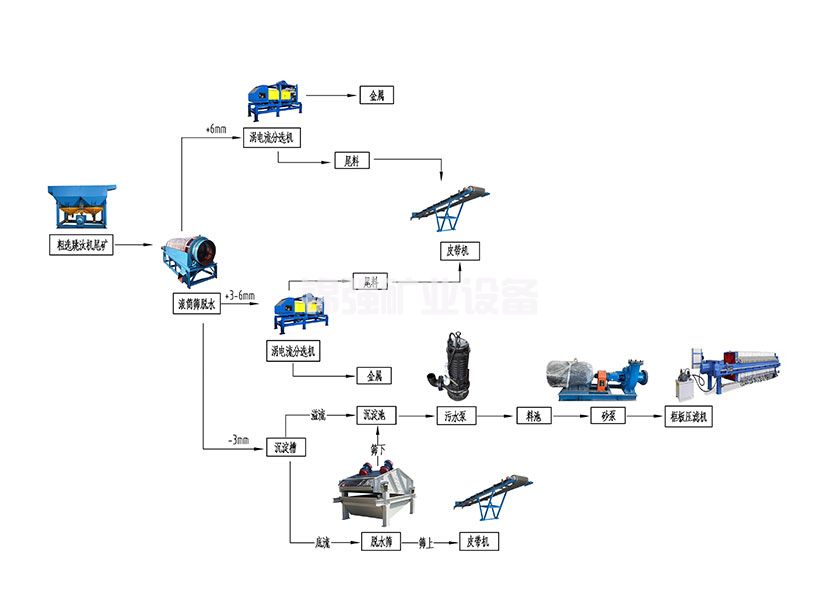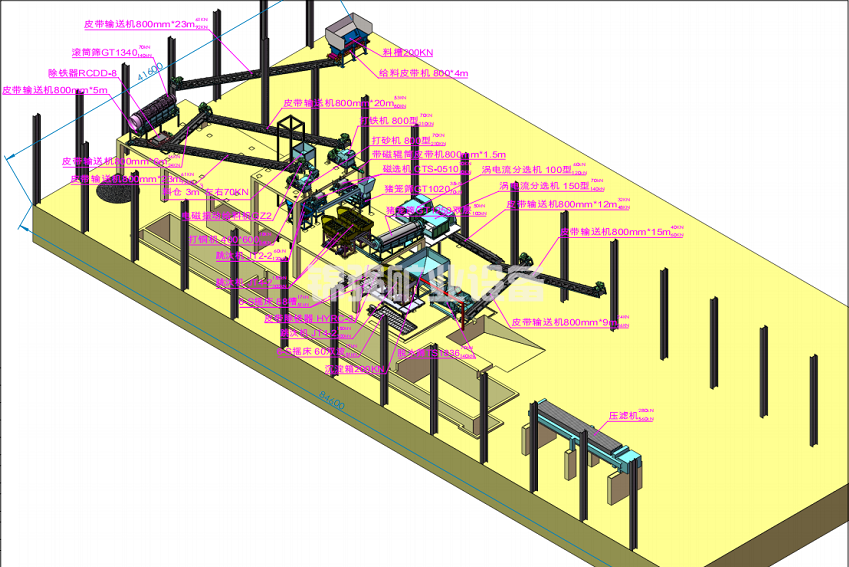With the acceleration of urbanization, the amount of urban waste is also constantly increasing. The treatment of garbage has always been a challenge in urban management, and traditional methods of landfill and incineration can no longer meet the treatment needs of urban garbage. Garbage power generation technology is a new type of treatment method that can convert garbage into electricity while also recovering some valuable substances. The recovery of metals from waste power generation slag is one of the important tasks.
1、 Sources of Metals in Waste Power Generation Slag
 Waste power generation slag refers to the solid waste generated in the process of Incineration, and its main components are inorganic salts and glassy substances. These wastes contain a certain amount of metal elements, such as iron, copper, aluminum, etc.
Waste power generation slag refers to the solid waste generated in the process of Incineration, and its main components are inorganic salts and glassy substances. These wastes contain a certain amount of metal elements, such as iron, copper, aluminum, etc.
2、 Method for recovering metals from waste power generation slag
There are two main methods for recovering metals from waste power generation slag: physical separation and chemical separation.
1. Physical separation
Physical separation refers to the separation of metals and non-metallic substances through physical means. The commonly used physical separation methods include magnetic separation, gravity separation, screening, etc.
Magnetic separation method utilizes the different behaviors of substances with different magnetic properties in a magnetic field to separate metals from non-metals. The magnetic separation method is applicable to the recovery of magnetic metals such as iron and steel.
The gravity separation method uses different specific gravity of substances to separate metals from non-metals. The gravity separation method is suitable for recovering metals with high specific gravity such as copper and aluminum.
The screening method uses screens of different particle sizes to separate metals from non-metals. The screening method is suitable for recovering small metal particles.
2. Chemical separation
Chemical separation refers to the separation of metals and non-metallic substances through chemical reactions. The commonly used chemical separation methods include leaching, dissolution, reduction, etc.
The leaching method refers to soaking the waste power plant slag in chemical reagents to dissolve the metals. The leaching method is suitable for recovering soluble metals such as copper and zinc.
Dissolution method refers to the process of dissolving waste power generation slag in acid, alkali, and other solutions to dissolve metals. The dissolution method is applicable to the recovery of soluble metals such as copper and aluminum.
The reduction method refers to the reduction of metal ions into metals, which are separated from the waste power generation slag. The reduction method is applicable to the recovery of metals such as iron and copper.
3、 Application of Metals in Waste Power Generation Slag
Recycling metals from waste power generation slag can not only reduce resource waste but also reduce environmental pollution. The recycled metal can be used to manufacture various metal products, such as steel, copper pipes, aluminum alloys, etc. At the same time, it can also be used for manufacturing electrical appliances, electronic products, etc.
4、 Conclusion
The recovery of metals from the slag of the  garbage power generation furnace is an important task, which can reduce resource waste and environmental pollution. There are two methods for recovering metals: physical separation and chemical separation. The recycled metal can be used to manufacture various metal products, electrical appliances, electronic products, etc.
garbage power generation furnace is an important task, which can reduce resource waste and environmental pollution. There are two methods for recovering metals: physical separation and chemical separation. The recycled metal can be used to manufacture various metal products, electrical appliances, electronic products, etc.








